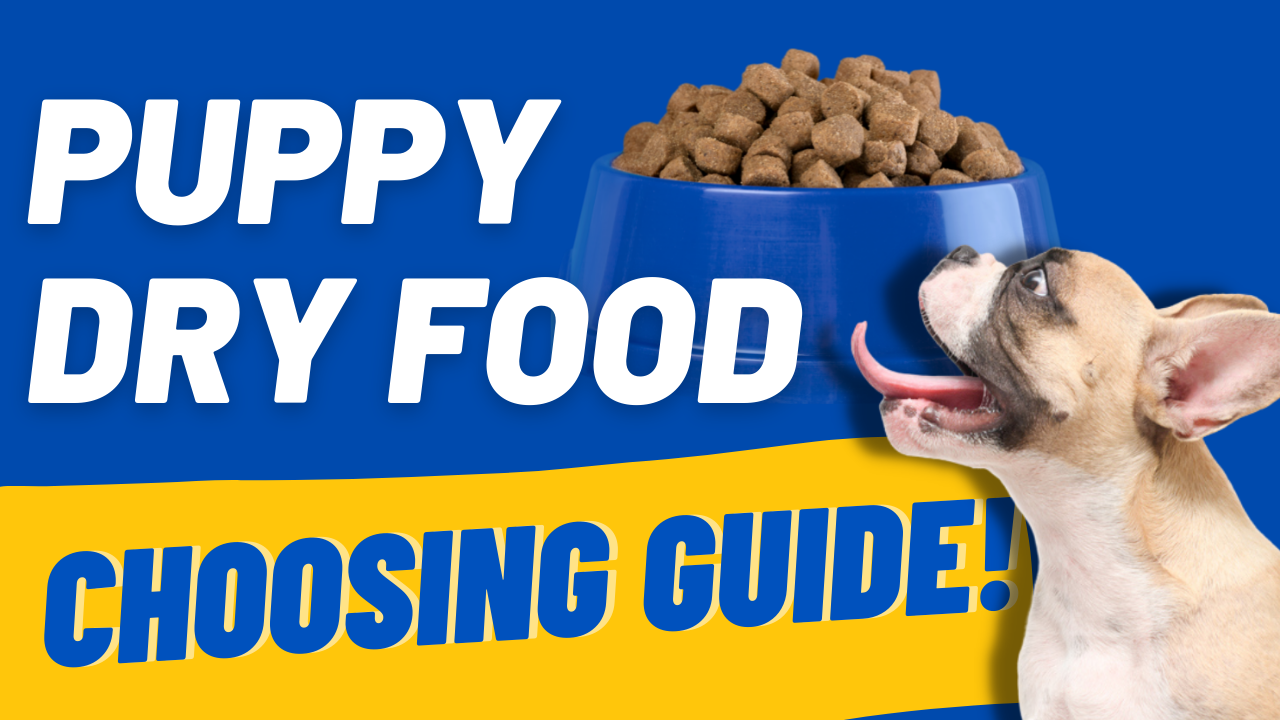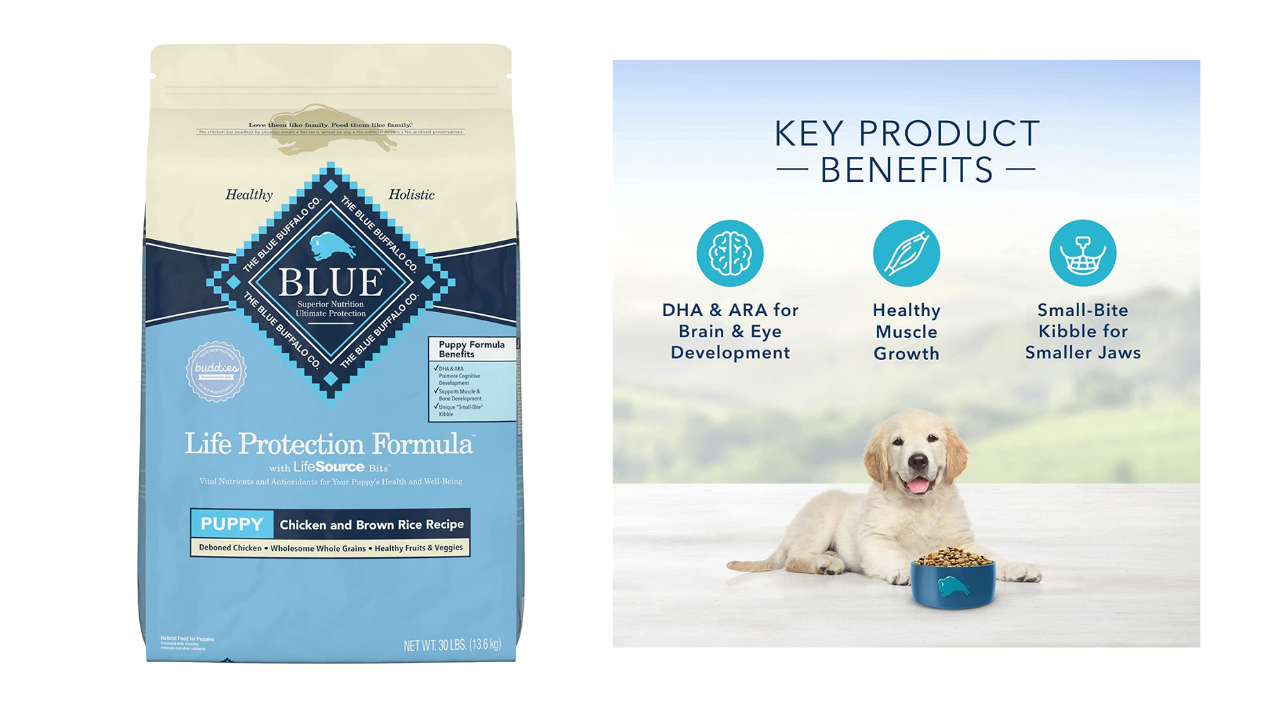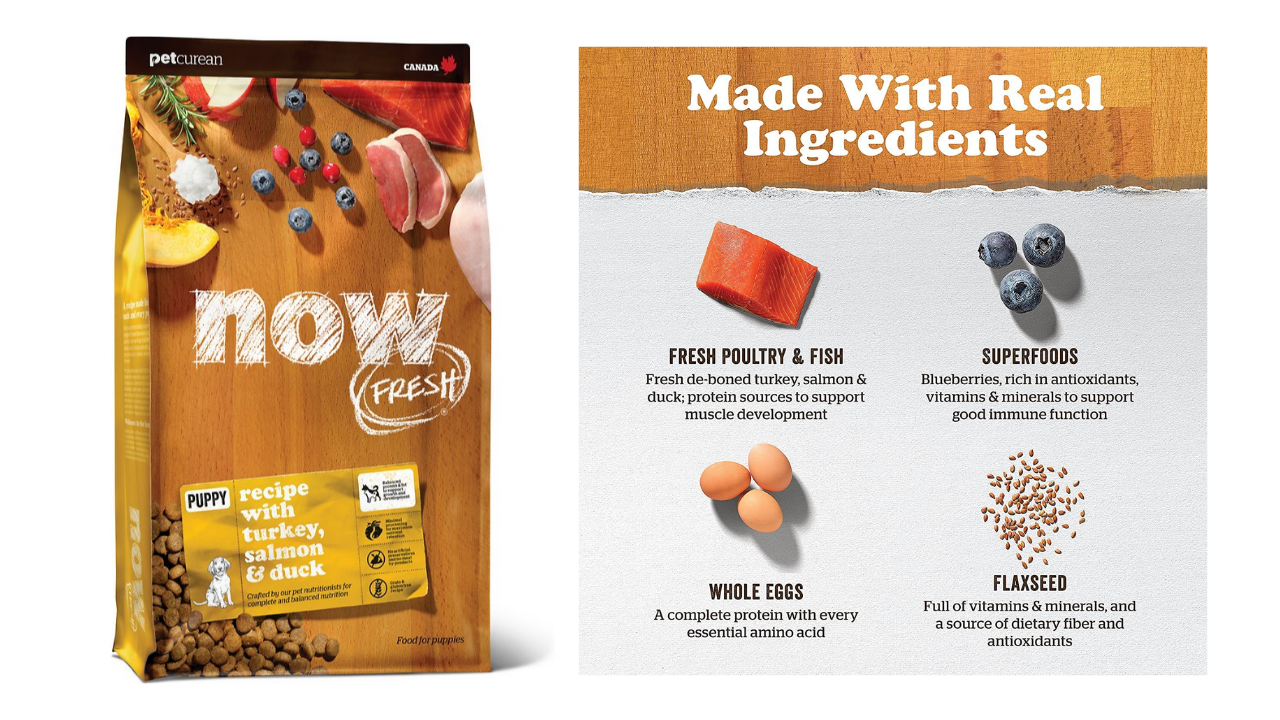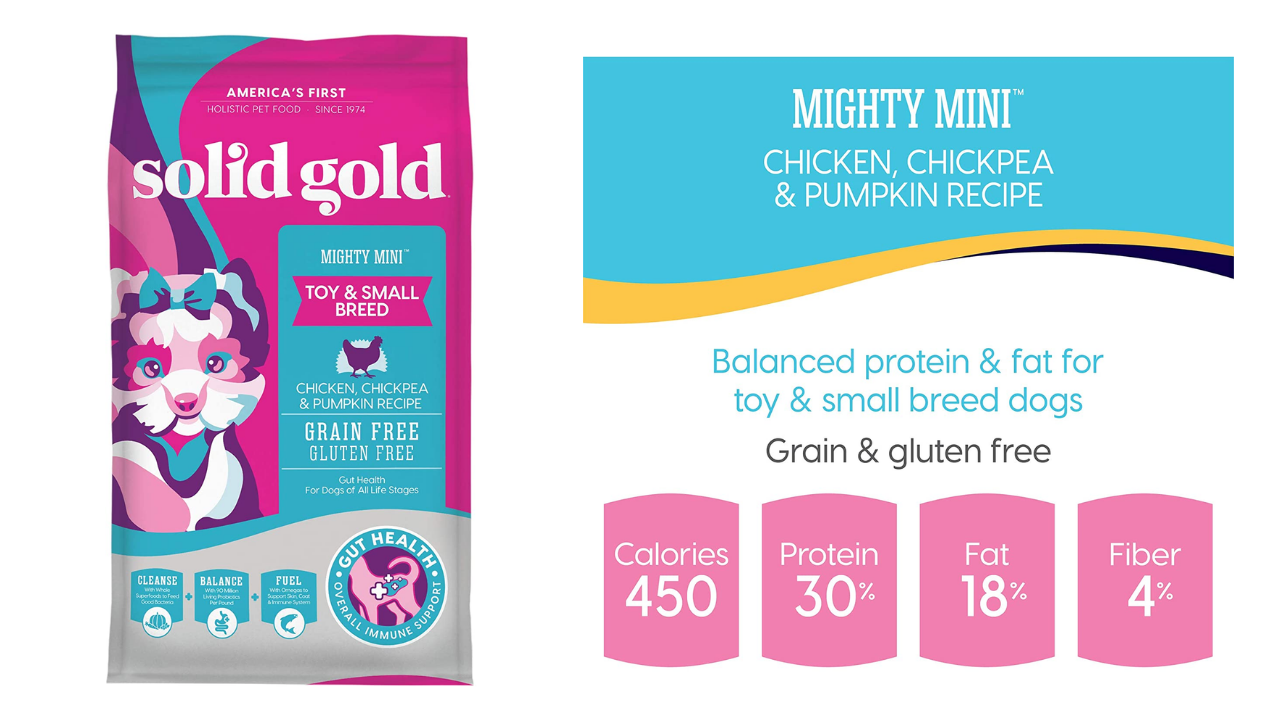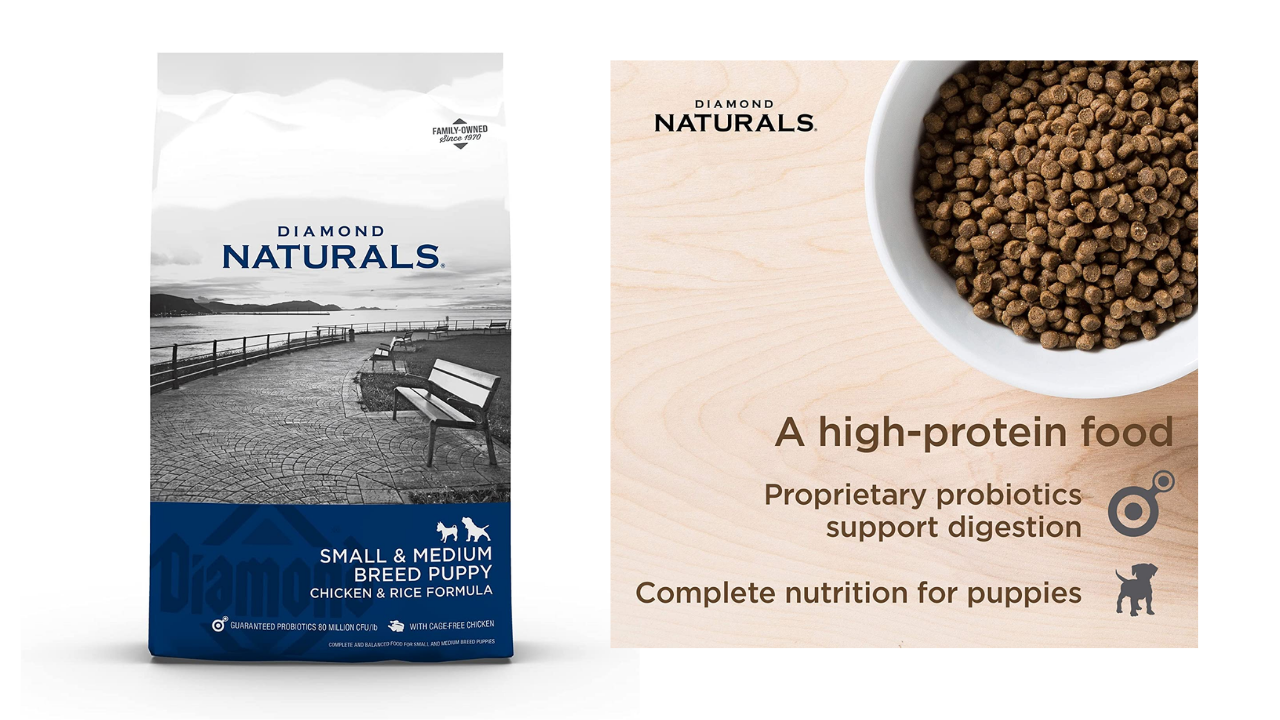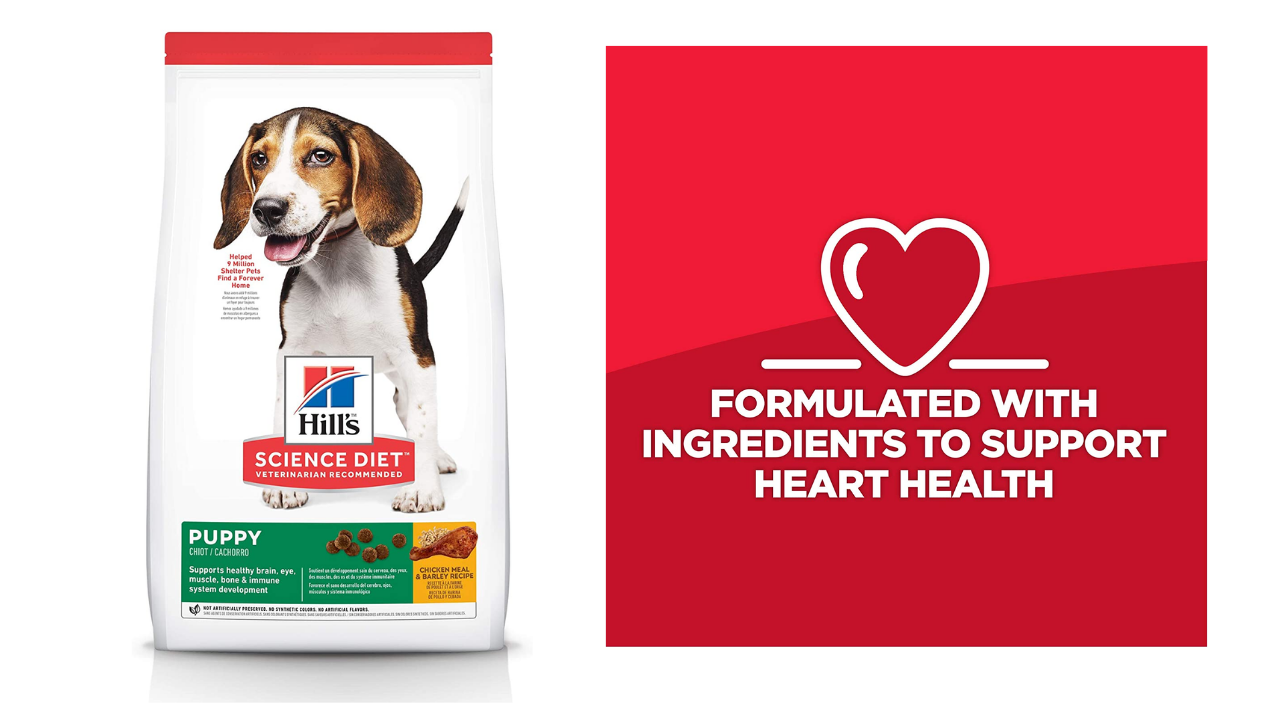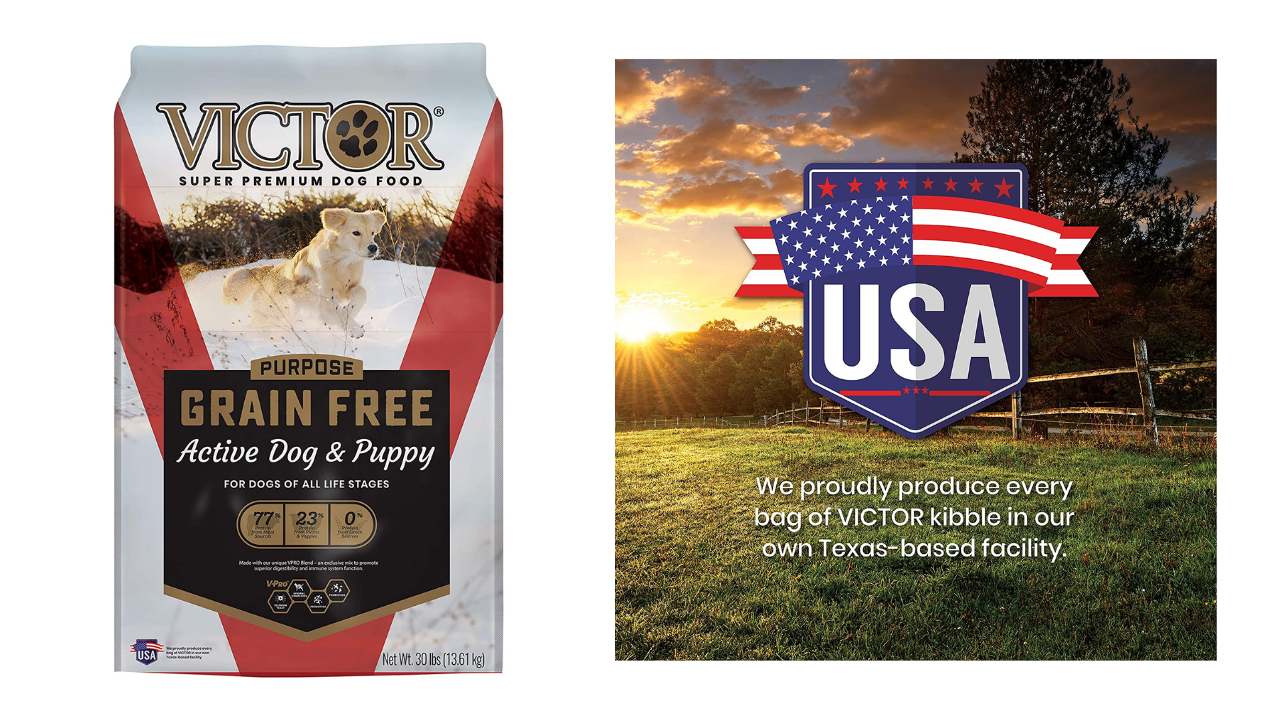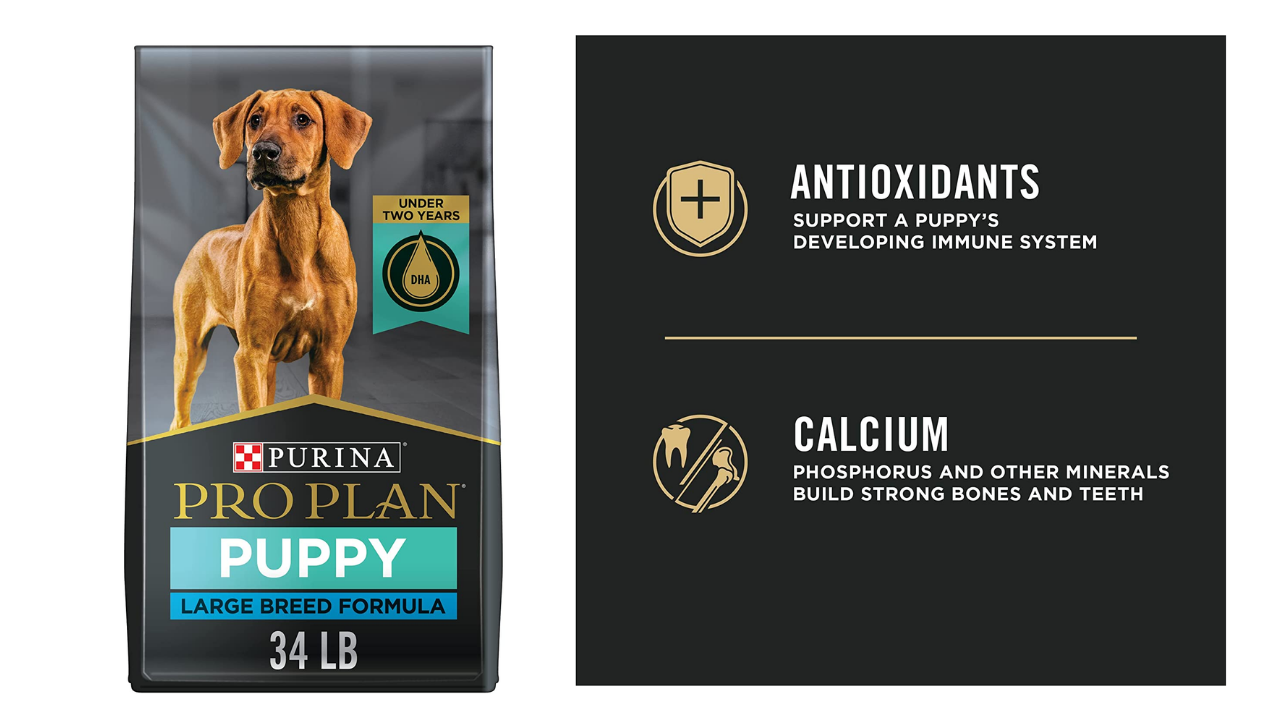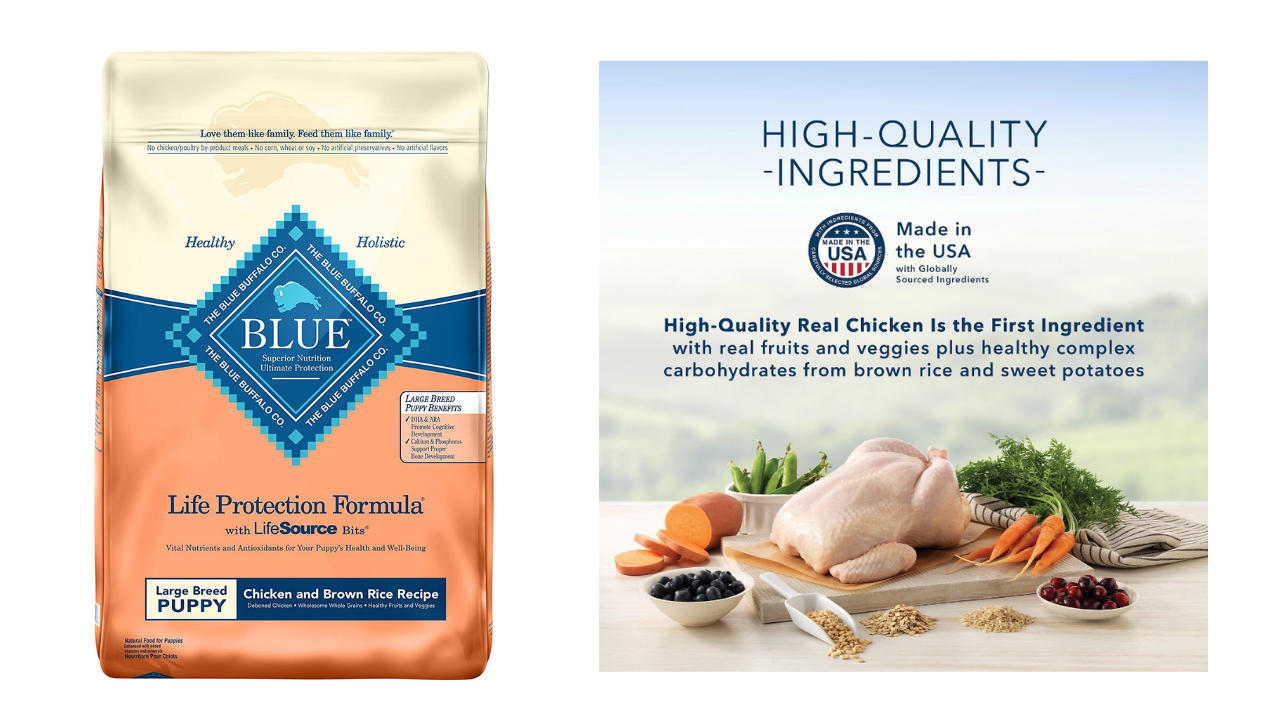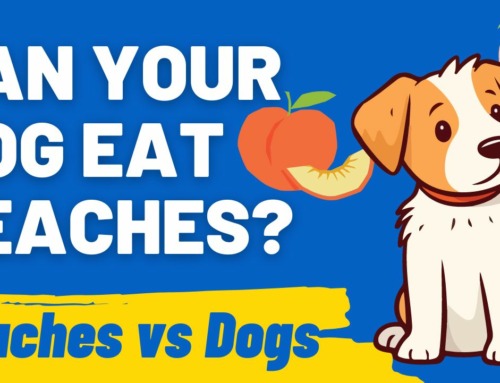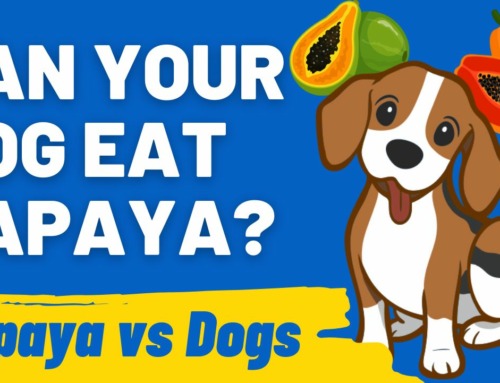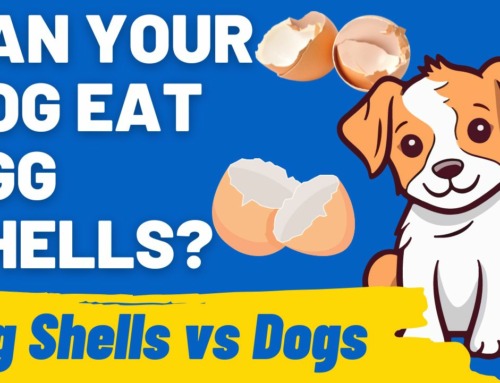Choosing the best dry food for your puppy is tricky and it brings up a ton of questions. We answer those questions, clear up all the misinformation, and tell you what your puppy needs in their diet. Here is your final stop for learning puppy nutrition and which puppy dry food you should get for your size pup.
The truth is that puppy nutrition is a complex subject, and your puppy has particular nutritional needs (depending on their breed and whether or not they are small, medium, or large). Genetics also has a part to play.
It’s vitally important to your pup’s long-term health that you get this right, so some research now will save you heartache later, not to mention the bills incurred by potential vet visits!
At times this post gets into the weeds on puppy nutrition, so if you get bogged down, feel free to skip ahead to our final recommendations.
Breed and health considerations
One of the first points to understand is that when it comes to puppy food there is no one-size-fits-all.
The best thing you can do for your puppy’s long-term health is to first be aware of any predispositions lurking in your pup’s breed or bloodline genetics.
This can have a massive impact on their ideal nutrition and overall wellness.
This article gives general guidelines for healthy small, medium, and large breeds and the best dry foods available for you to choose from.
However, it’s important to have your pup screened for problems that may already be present, but which may only show symptoms much later in their lives.
Your veterinarian will be able to do this screening with a simple blood test with DNA analysis. A urine sample may also be taken.
Quality breeders will have done this before you received your puppy, and have usually bred out any bloodline genetic issues.
Examples of breeds and what it means for their dietary requirements
Some breeds are born with congenital portosystemic shunts (liver shunts). Although it is more common in smaller breeds, it can still be present in larger breeds, too.
The breeds that can be affected by liver shunts include:
- Yorkshire
- Dachshund
- Beagles
- Maltese
- Miniature Schnauzer
- Havanese
- Miniature Poodle
- Cairn Terriers
- Bichon Frise
- Shih Tzu
- Lhasa Apso
- Pekingese
- Dandie Dinmont Terrier
- Australian Cattle Dog
- Australian Shepherd
- Labrador Retriever
- Golden Retriever
- German Shepherd
- Irish Wolfhound
- Old English Sheepdog
- Samoyed
- Irish Setter
- Doberman Pinscher
This condition means they have trouble breaking down proteins, and they will need to have a low-protein dry food diet.
Sometimes the protein may contain far more plant or dairy proteins than we typically want to see in a dog’s diet.
These life-long conditions will mean that protein levels will need to be closely monitored.
- Some breeds like Dalmatians can be intolerant to the purines in red meat and organ meat. Like liver shunts, the amount and type of protein in their diet will need to change from the standard guidelines.
- Nordic breeds such as Huskies and Malamutes are prone to type 1 zinc deficiencies. Zinc deficiencies are also more common in large breeds.
- Certain breeds, most notably Bedlington terriers, can have a copper intolerance and need low copper diets. Indeed, there may be an issue in dog foods where too much copper might be causing copper storage disease.
- Other breeds, like Soft-coated Wheaten Terriers, are more prone to food allergies, and some bloodlines in Irish Setters can have a gluten intolerance.
- Certain breeds are prone to an L-carnitine deficiency (notably Boxers and Doberman Pinschers).
- In contrast, others are more prone to taurine deficiencies. Taurine deficiencies are most often seen in breeds like Cocker Spaniels, Golden Retrievers, Labradors, Newfoundlands, and Saint Bernards.
Both taurine and L-carnitine deficiencies can cause heart disease called canine dilated cardiomyopathy (DCM).
Studies have tentatively linked some ingredients to taurine deficiencies, such as legumes and pulses common in grain-free diets, or even lamb and rice.
Low protein and high fiber diets have also been flagged as possible causes.
Being aware of any specific underlying problems your puppy may have is essential to choosing the correct dry puppy food formula.
This is a step so often missed in puppy nutrition and can lead to shorter life spans or chronic issues, including brain health, skin and coat issues, and overall health and wellness.
But suppose you have a healthy puppy with no underlying problems, what are the nutritional guidelines for puppies in general?

Nutrition for puppies (in general)
Protein required from dry puppy food
Puppies generally require more protein in their diet than adult dogs for their developing bodies.
For most adult dogs, it is a myth that they should eat mainly meat. This is because of the amount of phosphorus in meat and the high amounts of ammonia that comes from breaking down too much protein.
Studies show too much meat can cause renal damage, inflammation, and suppress the immune system.
So while most adult dogs need only a moderate amount of quality animal protein in their diet (about 25% of dry food should be crude protein for adults), puppies require more protein for their development.
Note: Most healthy senior dogs need more protein too, so long as they don’t have any renal or liver trouble.
For puppies, a quality animal protein is best. Look for labels that have animal proteins listed as the first ingredient.
Be careful of dry food that uses plant proteins to bolster the amount of crude protein in the food.
When it comes to protein, quality fish, poultry, and novel proteins like venison are usually good choices.
One study on Golden Retrievers showed that those fed red meat kibble had higher incidences of cancer than those provided with a white meat choice of dry food.
Lamb and lamb meal has been linked to taurine deficiencies in the past and may not be a good choice for dogs prone to heart disease.
Be aware that plant proteins such as soybean protein isolates have a place where it is medically necessary for a dog who struggles with animal protein.
However, plant proteins have an incomplete amino acid profile for a healthy dog.
Companies sometimes use plant proteins to bolster the crude protein in the food, which is not ideal.
Always look for plenty of quality animal protein sources in the first five ingredients on the label.
You can also use a complete service like PetPlate and we have a great write-up on it here.
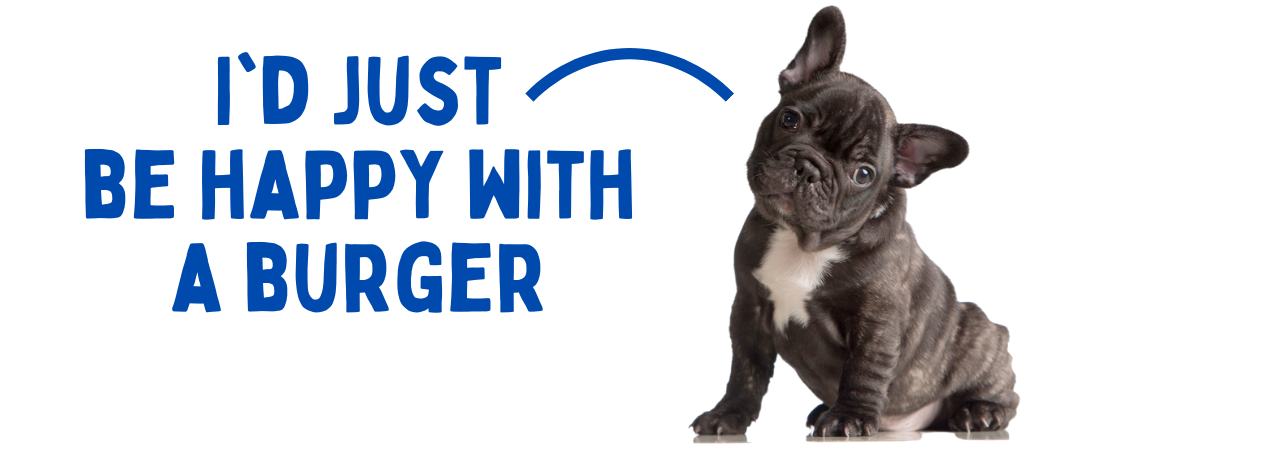
Fats required from dry puppy food
All puppies need essential omega-6 and omega-3 fatty acids to optimize skin health and regulate their immune systems.
Omega-3 fatty acids from plant oils are ALA, an essential antioxidant. But the most bioavailable omega-3s for dogs are EPA and DHA, which come from marine oils like fish or krill oil.
Puppies and older dogs specifically need more DHA in their diet because it is vital to help their brains develop and function.
Unfortunately, this is a tricky subject. While puppies can convert the ALA in plant oils to EPA and DHA, their bodies are not very efficient at doing this. This makes marine oils the best choice.
However, marine oils are known to go rancid and oxidize quickly. Low-quality dry food that has stood on the shelf for a few months also typically tests for fatty acid levels below the recommended minimum.
This means that buying food with fish oil means buying from a trusted brand and being very careful about storage. You can read our article on how to store kibble here.
Since omega-6s and omega-3s work together to regulate the immune system, it’s good to have the ideal ratio of both.
Omega-6s help the immune system respond to injuries and infections, while omega-3s, specifically EPA and DHA, help calm down inflammation and prevent problems with chronic inflammation.
Omega-3s are also essential for gut health.
Puppies specifically need more DHA in their diets as this is the omega-3 that helps their developing brains.
While we don’t yet know the perfect ratio of omega-6s to omega-3s, studies suggest it is 5:1.
Look for the amount of omega-6s and 3s on the package, and take note the label says the omega-3s are from plant sources.
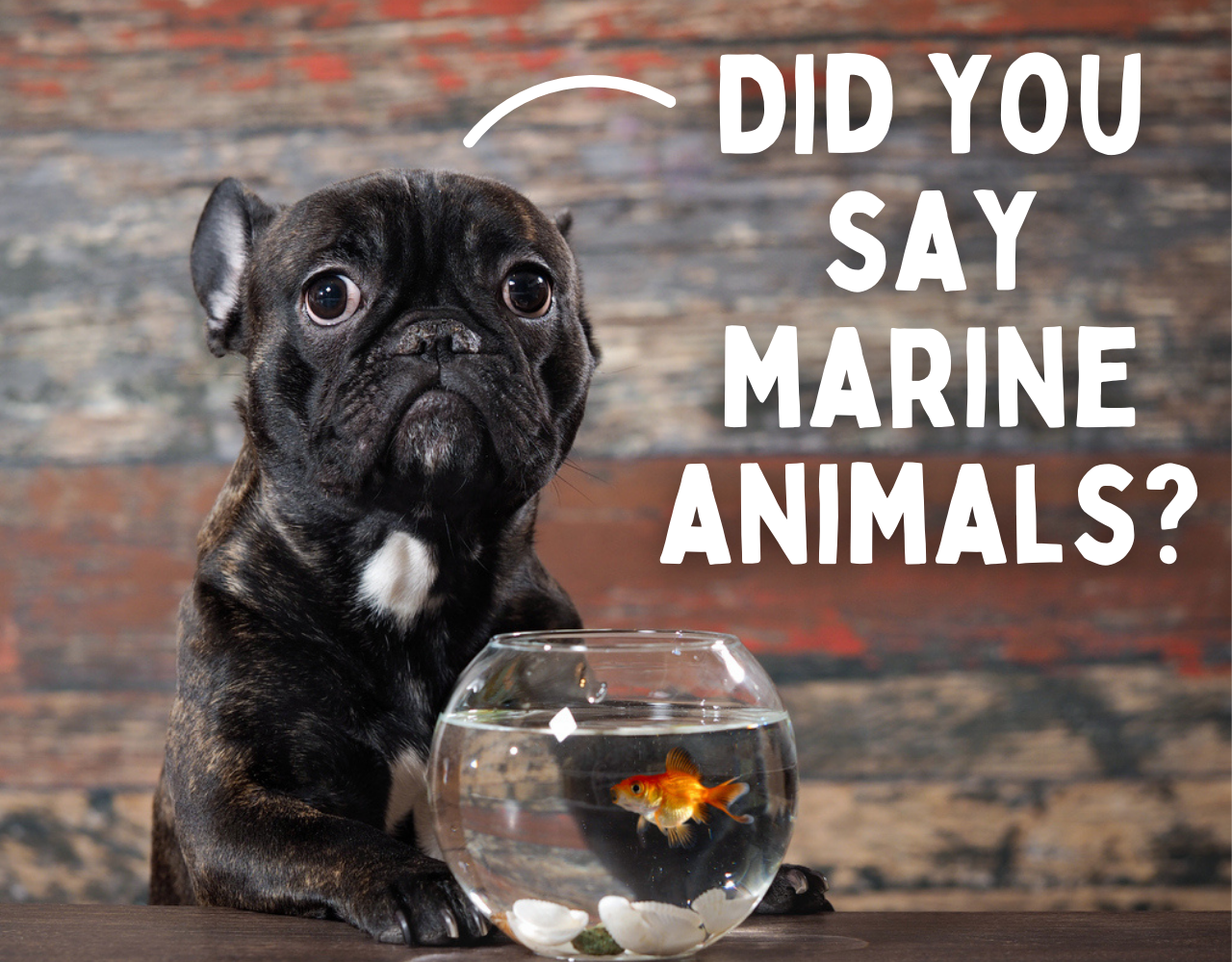
Carbohydrates required from dry puppy food
There is no reason to avoid quality carbohydrates from grains. Allergies to grains are extremely rare in dogs.
If an allergy does occur, that grain can simply be removed from the diet. A trial of a change in dry food (with different grain or none) would be required to confirm allergy.
Carbohydrates that contain resistant starch are great choices to optimize gut health and control blood glucose levels. Low glycemic index carbohydrates can also help prevent diabetes.
Rice, especially brown rice, oats, and moderate amounts of barley, all contain resistant starch and are good choices.
A simple rule of thumb is that carbs should make up no more than about 45% of the dry matter in your puppy’s food.
Fiber required from dry puppy food
Most puppies should have about 4-5% crude fiber in their diets. This should usually be a mix of soluble and insoluble fibers.
Small breed puppies should generally have more soluble fiber such as fructooligosaccharides (FOS), beet pulp, or fruit fibers like pectin.
Smaller breeds should avoid purified starches such as cornstarch, tapioca, wheat, rice, and potato starches.
In contrast, cereal flours, as well as soluble fiber provided by cereals, are recommended. This means more fiber from barley, oats, FOS, inulin, and fruit fiber like pectin in the diet can be helpful for small breeds.
Suppose you have a medium or large-breed puppy like a Border Collie or Labrador. In that case, you need highly digestible starches and proteins with more insoluble fiber such as cellulose. This is because larger breeds have a more developed large intestine.
You might like to read our post, Do Puppies Eat a Lot? (What You Need to Know)
Grain or grain-free for puppies
There is some fear-mongering going on when it comes to grains in dog food.
The truth is grains provide fuel for a puppy’s energy requirements, can help with gut health, and whole grains assist in controlling blood sugar levels.
All of these things are super important for puppies.
The chances of a puppy having an allergy to grains are very low. In fact, only .2% of dogs have a food allergy. The rest of the allergies out there are attributed to environmental concerns.
More astounding is that only 10% of all dog food allergies are attributed to grains.
And the problem with grain-free puppy foods is that they rely on plant proteins, starches, and fibers from potatoes, peas, beans, and other legumes and pulses.
These substitutes may actually be harmful by inhibiting the absorption of critical nutrients.
Grain-free dog diets were being linked to taurine deficiencies. And so the food companies started adding Taurine to their grain-free dog foods.
This isn’t to say we’re totally against grain-free puppy foods. Some are made of quality ingredients and have the necessary added Taurine, and have been manufactured correctly.
In fact, our second-best choice for small puppies is grain-free!
Some grain-free made dog foods are simply far superior to grain foods due to all the other factors.
Poor quality ingredient profiles, nutrition balance, or high-temperature cooked foods are hazardous to your dog’s health. A grain-free option is always preferred over these things.
For more information on this subject, be sure to read our post: Grain Free Better for Puppies? (The Truth Revealed).
You might also like to read our post, Same Dog Food Different Flavor: Dog Food Flavor Questions.
Essential nutrition for puppies
We start diving deeper into puppy nutrition here, so feel free to skip ahead to our recommendations at any time.
Other general nutritional guidelines to remember for puppies are:
- Avoid artificial colors, preservatives, or flavors in kibble.
- Look for antioxidants like plenty of vitamin E (preferably over 300 IU/kg) and vitamin C.
- Quality probiotics like L.Rhamnosus and L. Acidophilus are helpful for your puppy. However, not all supplements for dogs are regulated and pass third-party testing, so always look for the National Animal Supplement Council’s seal to guarantee the quality.
- Quality dry food usually contains chelated minerals for better absorption. This means looking for chelates like zinc proteinate of zinc amino acid chelate, rather than the inorganic zinc sulfate or zinc oxide.
Beware labels that contain both chelated and non-chelated versions of the same mineral. This might look like copper sulfate, followed by copper proteinate, and could mean the food is supplying too much of these minerals.
- Puppies need very specific amounts of calcium and phosphorus for their growing bones. Do not buy puppy food that does not put the percentage of these minerals on the label since both a deficiency and an excess can cause bone and joint deformities.
- The above is especially dangerous for larger breeds prone to hip dysplasia. Still, it can also be a problem for small breed puppies. The ideal Ca:P ratio is 1.1:1 to 1.4:1. A good rule of thumb is that:
- Calcium is limited to 0.8-1.4% of dry matter
- Phosphorus is 7-1.2 % of dry matter
This should be specified on the label. If it isn’t, the food may not be properly formulated for puppies.
- All puppies should be kept lean and never allowed to become overweight. This causes excess strain on their joints and being overweight can contribute to issues like diabetes or arthritis later in life.
- Do not put overweight puppies on adult weight-loss food, as this can cause malnutrition. Simply monitor their portions and calories and step up the level of low-impact activity and exercise.

Macronutrients and calories in dry food
The ideal macronutrients in dry food for puppies differ depending on your breed’s size and metabolism.
A large breed puppy needs a low-calorie diet to prevent them from growing too quickly and causing skeletal and joint issues. It also helps to prevent them from gaining excess weight.
This makes small breed puppy food unsuitable for them. Large pups should be restricted to 3,200 to 4,100 kcal/kg or 3.2 to 4.1 kilocalories per gram of diet fed.
The larger the breed, the more their calories should be controlled.
For smaller breeds with faster metabolisms, a high-calorie food is more appropriate. For active smaller puppies, calorie density should be about 4.0 to 4.5 kcal/g
Just feeding more or less of any particular puppy food is not ideal, because every food has a certain amount of nutrients that go with the calorie count.
So feeding more of a low-energy food to a pup that needs a high-energy diet, also means they can take in an excess of minerals such as calcium, phosphorus, copper, vitamin A & D, and other nutrients that are problematic in high doses.
Meanwhile, feeding less of a high-calorie diet can mean deficiencies, as they will also get fewer nutrients per portion.
Guaranteed analysis in dry food
For most puppies, good food should have the following micronutrients:
- Protein: 29 to 34%
- Fat: 12 to 20% *note, the smaller and more active the pup is, the closer to 20% fat they can have in their diet. For heavier, larger, and low-energy puppies, it is better to lower fat to 12-15%.
- Carbohydrate: 35 to 45 %
- Fiber: about 4 or 5%
[/fusion_text]
Best dry food for small puppies
Taking into account all we’ve talked about and a wide range of dietary and nutritional factors, we selected our best choices from dozens of options.
The winners are as follows:
WINNER
Blue Buffalo Life Protection Formula Puppy Chicken & Brown Rice Recipe
Why we love it:
- Real chicken with no by-products, artificial flavors, or preservatives.
- It contains 27% crude protein and 16% fat, great for small breed puppies.
- It contains the correct ratio of omega-3 to omega-6 fatty acids for healthy skin and coat.
- Blue Buffalo puppy also contains DHA and ARA for brain and eye development.
- Smaller bite kibbles for small puppies.
- Made in USA
RUNNER UP
Now Fresh Grain-Free Small Breed Puppy Recipe Dry Dog Food
Why we love it:
- This is a quality meat-based diet with no by-products.
- It contains 28% crude protein and 18% fat, great for small breed puppies.
- It contains the correct ratio of omega-3 to omega-6 fatty acids, with EPA and DHA.
- This food also contains helpful probiotics, L-carnitine, taurine, chelated minerals, and antioxidants.
- Now Fresh cooks their food at a lower temperature to minimize the problems with heat processing food.
- Made in Canada (has high standards for dog food)
Best smallest kibble
WINNER
Solid Gold Mighty Mini Gut Health Small & Toy Breed Puppy Grain-Free Chicken, Chickpea & Pumpkin Dry Dog Food
Why we love it:
- This food is specially formulated with tiny puppies in mind.
- It is 30% protein and 16% fat.
- It contains a good omega-6 to 3 ratio with essential DHA for developing the brain.
- Some essential minerals are chelated.
- The bulk of the protein is from quality meat sources.
- There is a good range of essential vitamins and minerals.
Best dry food for medium puppies
WINNER
Diamond Naturals Small & Medium Breed Puppy Formula Dry Dog Food
Why we love it:
- At 3,995 kcal/kg, this is a good choice for most medium-sized breeds.
- It is a high-protein food with enough fat to keep faster metabolism and more active young dogs.
- It has a good calcium-to-phosphorus ratio.
- It has chicken as the first two ingredients, making poultry the bulk of the protein.
- It contains probiotics, a full range of vitamins, antioxidants, and chelated minerals.
- This food also adds DHA for bone development and a good amount of zinc.
- Made in USA
RUNNER-UP
Hill’s Science Diet Puppy Chicken Meal & Barley Recipe Dry Dog Food
Why we love it:
- With moderate calories, protein, and fat, this is well-balanced food for medium-sized puppies with average energy levels.
- It contains a fantastic amount of vitamin E, C, taurine, and DHA for puppy brain development and immune system health.
THIRD BEST
VICTOR Purpose Active Dog & Puppy Formula Grain-Free Dry Dog Food
Why we love it:
- This is the ideal food for active and energetic medium to large breed puppies, such as Border Collies. It contains 33% protein and 16% fat. The bulk of the protein is from real meat.
- The minerals are chelated; it is full of antioxidants, high-nutrient ingredients, and probiotics.
- It contains nutrients particularly important for puppies, such as DHA and L-carnitine, with a decent omega-6 to 3 ratio.
- Made in the USA
Best dry food for large puppies
WINNER
Purina Pro Plan High Protein Chicken and Rice Formula Large Breed Dry Puppy Food
Why we love it:
- This high-protein, low-fat food contains the ideal macronutrient profile for a large breed puppy.
- This food includes excellent nutrients for large breeds, such as added DHA and glucosamine.
- It has a good omega-6 to omega-3 ratio and an excellent calcium-to-phosphorus ratio.
- At 3934 kcal/kg, it is the best range of calories for large breeds.
RUNNER-UP
Blue Buffalo Life Protection Formula Large Breed Adult Chicken & Brown Rice Recipe Dry Dog Food
Why we love it:
- At 3,508 kcal/kg, this is the ideal low-calorie food for a large or giant breed pup.
- It contains excellent nutrients for large breeds, such as added taurine, L-carnitine, glucosamine, and chondroitin sulfate.
- It contains a good omega-6 to omega-3 ratio and a very good calcium-to-phosphorus ratio.
- It contains an impressive range of vitamins and probiotics.
- It contains chelated minerals, antioxidants, and no artificial additives.
- Chicken makes up the first two ingredients, meaning that the majority of protein likely comes from animal sources.
Best dry foods made in the USA
If you are looking for homegrown, USA made dry food for your puppy, our top three options are:
Feeding Calculator
We have created a feeding calculator for your puppy to make it easy when it comes to measuring out portions. You can find our feeding calculator here.
Puppy VS Adult Dry Foods
It’s good to be skeptical of dog food that says “for all life stages” on the label. Also, be sure to steer clear of food formulated for adult dogs for your puppy.
Dogs’ nutritional requirements change as they age.
For example, the ideal amount of calories, protein, or even micronutrients such as calcium, phosphorus, or omega-3 fatty acids all change throughout a dog’s lifetime.
Therefore, senior dogs have very different nutritional guidelines from adults or seniors, and puppies also have specific needs.
OK for puppies to eat dry food?
Yes, as soon as puppies are old enough, dry food, or kibble, is fine for them to eat. However, not just any dry food is good for your puppy. It’s essential to know the difference between a good brand with a product optimally formulated for your puppy’s health, and one that isn’t.
Your puppy’s breed and size also impact their ideal nutrition. Small breed puppies require a different diet from a large breed puppy.
In saying this, it’s essential to first understand what nutritional requirements are generally true for most puppies.
Can puppies live only on dry food?
Yes, puppies can live well only on dry food. In fact, quality dry food can supply all the necessary nutrients your puppy needs for long-term health. It is also easier to find a balanced, nutrient-rich diet and is also better for puppy dental health.
Adding snacks or treats to a puppy’s diet can also disrupt the balance of their diet.
For instance, while a bit of chicken won’t harm your puppy, adding too much excess meat also means much more phosphorus in your puppy’s diet.
This can cause a range of problems, from bone deformities to calcium deficiencies and long-term renal troubles. Not to mention the issue of adding too many calories to a young dog’s diet.
Always factor any treats you give your puppy into their daily calorie intake. And never let treats be more than 10% of your dog’s diet.
Also, beware of adding supplements that aren’t recommended by your vet.
Many essential nutrients are toxic in high doses or can cause many health issues. This includes vitamin A, C, D, and most minerals.
A well-balanced dry food should have all the recommended vitamins and minerals in the right amounts and ratios to keep them healthy.
Just remember to transition to the appropriate adult food when they are fully grown.
When can puppies eat dry food?
The full process of moving from a soggy gruel to chewing dry pellets happens gradually, with most puppies eating hard kibble by the time they are 6 to 7 weeks old.
Puppies are dependent on their mother’s milk until they reach about 3 ½ weeks.
At this point, their first set of tiny puppy teeth will begin to make nursing uncomfortable for their mom, and she will start avoiding it.
This will start the weaning process, where the breeder will start them on a watery weaning mixture and gradually add dry food that is soaked into a gruel.
Over the next 2 to 3 weeks, the breeder will gradually reduce the water in the pellets until the puppies are fine with dry food.
If you want to know more about how puppies transition dry food, you can read our article here.
When can puppies eat dry food without water?
Puppies can begin safely eating dry food between 6 and 7 weeks of age. It’s vital that the transition happens slowly and that puppies first learn to chew kibble properly. Young puppies that are prone to eating fast are at a bigger risk of choking. This is why moving from gruel to pellets should happen gradually.
Wet Vs Dry Food
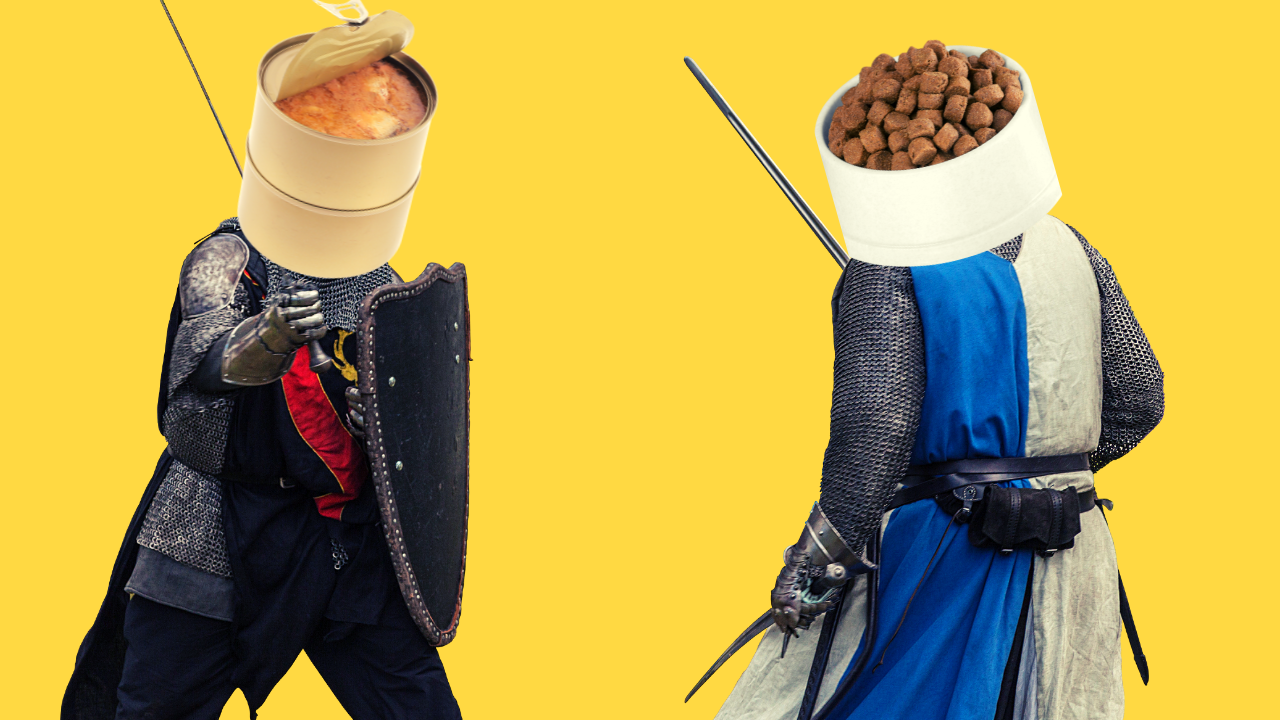
Here is a brief overview of some of the pros and cons of dry food vs wet food for puppies…
Dry Food / Extruded Kibble
Pros:
- Better for teeth than wet food
- Most convenient
- Long-shelf life
- Easiest to find the right formula and balanced nutrition for your puppy’s needs.
- Pathogens are minimized as food is sterilized.
- Dry food is usually consistent and uniform.
- The heat processing of proteins and starches makes them more digestible.
- Reduces the oxidation of fats and oils. At the time of purchase, dry food tends to have lower levels of oxidized fats than wet food.
Cons:
- As a highly heat-processed food, kibble released more pro-inflammatory compounds called AGEs linked to disease, and can also “switch on” inflammatory genes.
- Dry food can go stale, or contain contaminants such as mycotoxins owners aren’t always aware of.
- Ultra-processed high- carbohydrate foods are linked to more allergies and incidences of inflammatory bowel syndrome in dogs.
- The long shelf life of dry food can be misleading, as nutrients do decay over time, or after contact with heat and light.
Wet Food / Canned
Pros:
- Puppies usually find canned wet food more appetizing.
- The high water content is much better for a dog’s kidneys and liver.
- Canned food has a long shelf life while it is in the can
Cons:
- Like dry food, canned food is vulnerable to contamination.
- Once opened, it goes rancid quickly.
- As canned food is steamed at higher temperatures, it releases more AGEs than dry food, making it a bigger risk for disease.
- Canned food tends to have a higher rate of allergies because of compounds released by extreme heat processing.
- Canned food is linked to more dental issues than dry food.
All in all, we recommend that dry food is a better option for puppies.
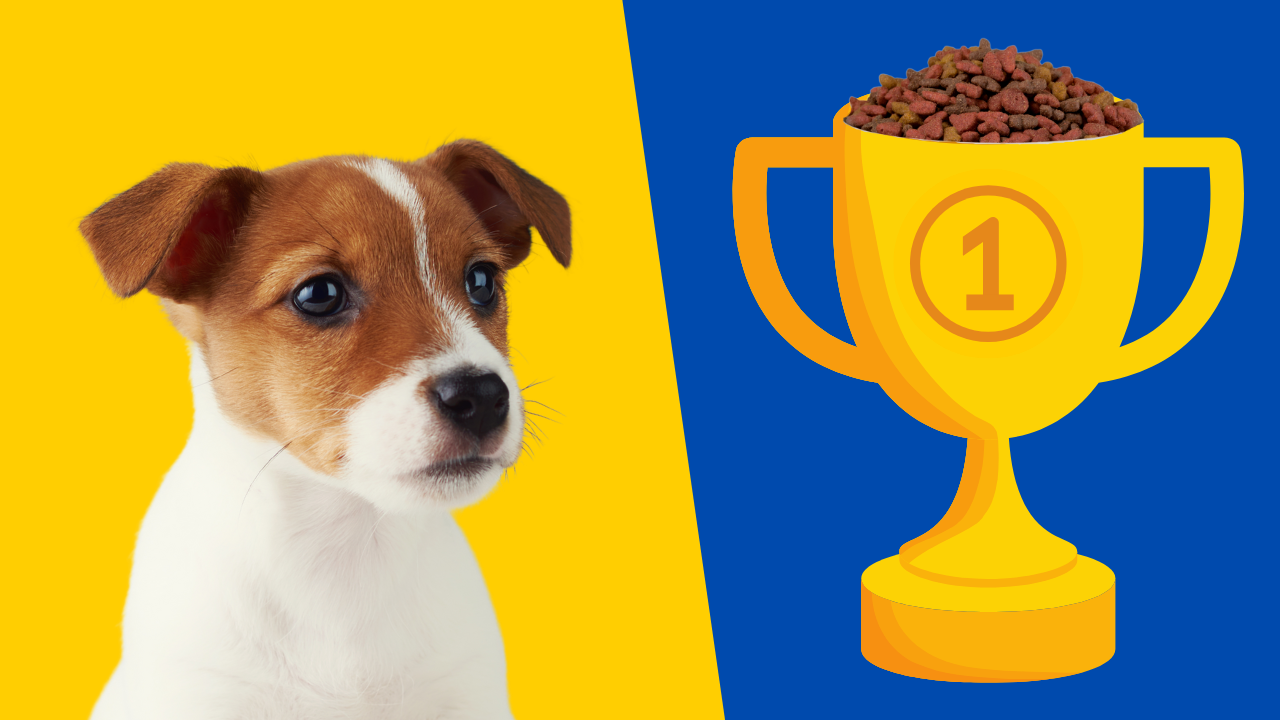
Can a 5, 6, or 7-week old puppy eat dry food?
At 5 weeks, a puppy would normally still eat dry food soaked in water. At this point, the owner should be decreasing the amount of water to allow the puppy to get used to chewing their food.
By 6 weeks, most of the water should be gone, and the puppy should be getting used to eating pellets. During this phase, you can monitor puppies closely for any signs of choking.
If they handle the dryer food well at 6 weeks, you can typically stop adding water altogether by the time they are 7 weeks old. At this point, puppies can begin eating plain pellets.
Final Thoughts
Dry food for puppies is a vast and nuanced topic. In general, good food should contain all the necessary macro and micronutrients for your dog.
Still, it is essential to understand your puppy’s unique nutritional requirements.
This means understanding what nutrients are essential for the size of your pup and if your puppy’s breed has any specific requirements. Always screen your puppy for any health problems that could affect their diet.
And as always, if you’re ever unsure, take your dog to the Vet for clarification.

